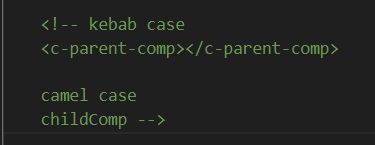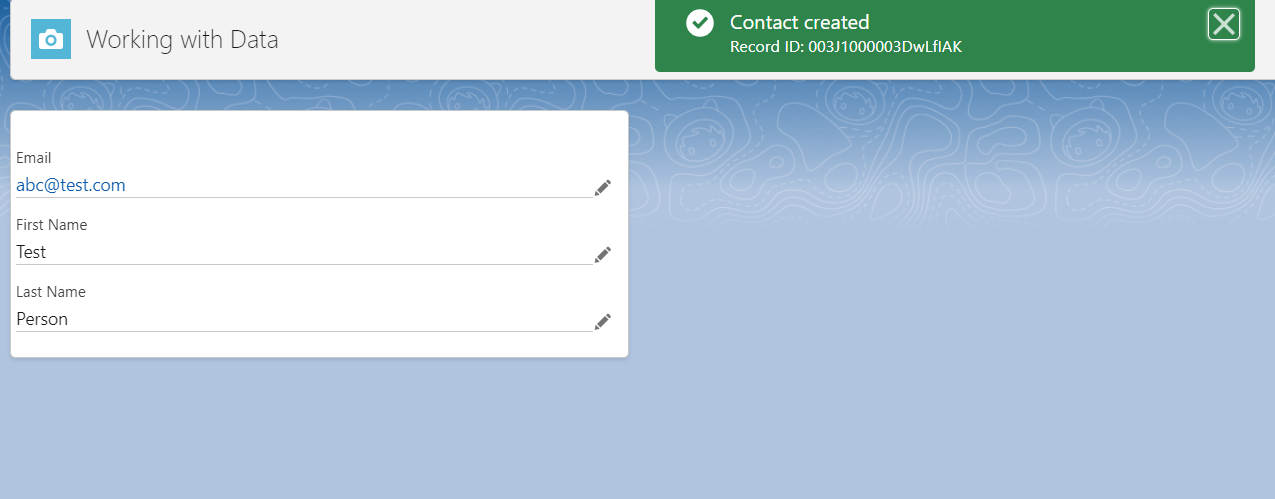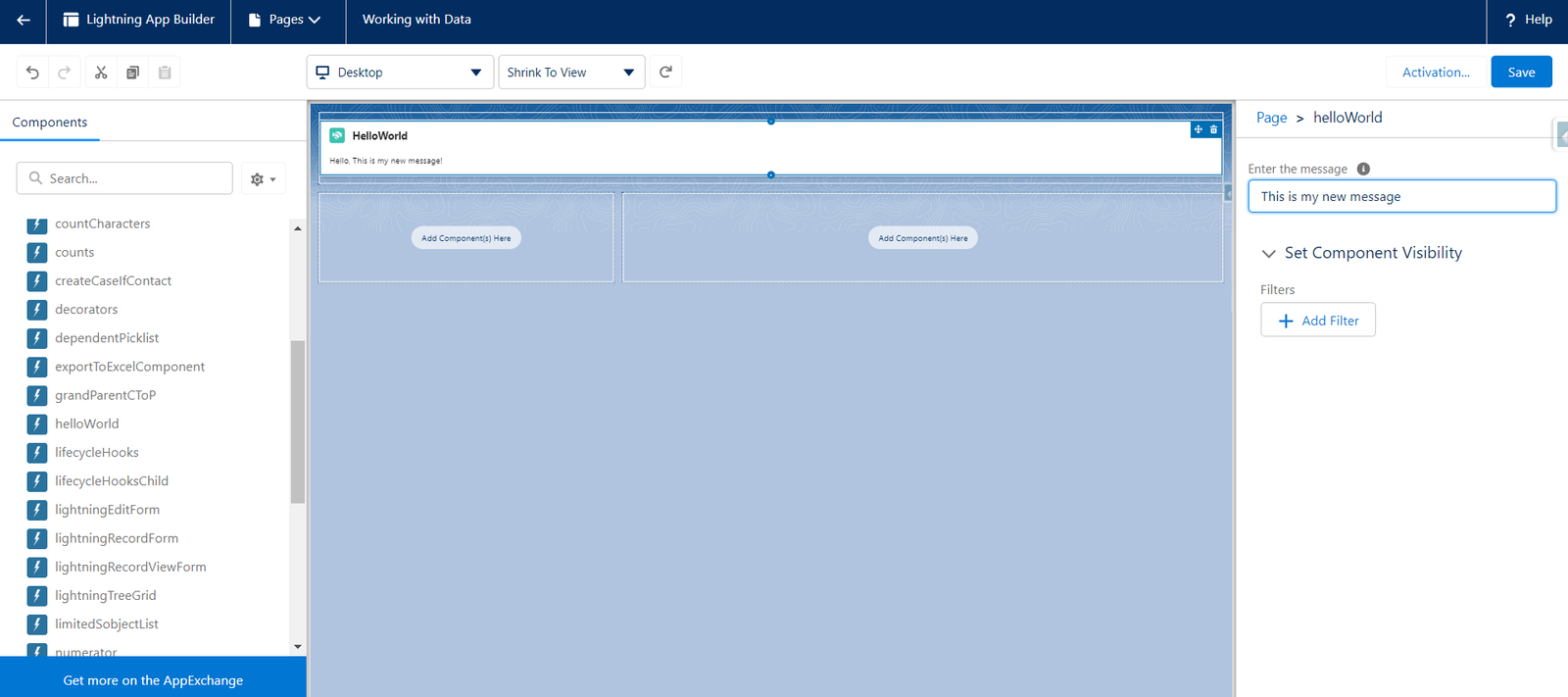Question 1. What is the structure of LWC?
Answer – LWC is built using these main parts, including HTML, JS, CSS, and XML.
Question 2. Please explain the use of each part in the LWC folder structure.
Answer – The following is the explanation of each part’s usage :
- HTML – It defines the markup of the LWC.
- JS – It establishes the component logic and behaviours of LWC.
- CSS – It defines the styling of LWC.
- XML – It includes the component’s metadata. Here we defined the attributes such as targets, like where our component will be displayed in the application.
Question 3. What is the naming convention that should be followed while working with LWC?
Answer – The following are the rules that we should follow while naming our LWC:
- The component must start with the lowercase i.e. it should follow camel case.
- It must contain only alphanumeric or underscore characters, not a dash.
- While referencing components in HTML we should use the kebab case.
- Must contain only alphanumeric or underscore characters
Below are the samples of the camel case and kebab case

Question 4. What are the types of decorators in LWC?
Answer – In LWC we have three types of decorators – api, track and wire
Question 5. Explain each decorator and how we use them.
Answer – First of all to use any decorator we should use @ as a prefix then decorator and then variable or property name.
1. @api – It is used to make any property or variable public so that it will be visible to other components for communication.
2. @track – It is used to declare any property or method as private. In LWC all fields are reactive but if the field type is array or object, there are some limits to the depth of changes to be tracked. If we declare them with @track, we can observe the changes.
3. @wire – It is used to interact with salesforce data.
Question 6. What are the types of communication in LWC?
Answer – We have three types of communication in LWC which are
- Parent to Child
- Child to Parent
- Communication between independent component
Question 7. Suppose I have a scenario in which I have 2 LWC components and CompA and CompB I. CompA is the parent and CompB is the child. How can we send data from CompA to CompB?
Answer – Here we have to establish the Parent-Child Communication. It will be done through @api decorator.
Let’s look at the below example.
We have created two components here childComp and parentComp. We have messageFromParent in childComp which is receiving the value from Parent.
childComp.js
childComp.html
childComp.js-meta.xml
parentComp.js
parentComp.html
parentComp.js-meta.xml
OUTPUT

Question 8. Referring to the above scenario if I want to communicate Child to Parent where CompA is the parent and CompB is the child. How can we send data from CompB to CompA?
Answer – Here we have to show Child to Parent Communication. It will be done through the dispatching of the custom event from the child and then the parent component will receive it. Here we have two components childComp and parentComp. In the Child component, we have an input box to enter our value and then on clicking of Send Message button, we will dispatch our event.
In Parent component markup, where we defined our child, to catch the event we have to use “on” as a prefix just like we do in the standard events like onclick, and onchange. After that, to handle the event we have a handler in the JS handleMessageFromChild which is receiving the event and in the detail, we have our value. Below is a sample of Child to Child-to–Parent communication.
childComp.js
childComp.html
childComp.js-meta.xml
parentComp.js
parentComp.html
parentComp.js-meta.xml
Initially, we are displaying No Message then receiving the value from the child.
OUTPUT


Question 9. What is the promise function of LWC?
Answer – The promise function basically helps us to run a code asynchronously and it returns success and failure event upon completion. It has different states:
Pending: The initial state
Fulfilled: The operation was completed successfully ie resolved.
Rejected: The operation failed.
Question 10. How can we call apex in LWC?
Answer – There are two ways to call the apex method in LWC –
- Using wire services
- Using Imperative method
Call Apex using @wire Decorator:
You can @wire a property or a function to receive the data from Apex. You have to annotate your apex method with @AuraEnabled(cacheable=true). By using the wire services it reduces the server call because it loads the data from the cache. We can’t do DML with a wire decorator.
Imperative Call
If we want to invoke our method call on some click or to control our method invocation we have to call the method imperatively. Calling our method in this way is also helpful if we want to perform some DML operations. Here, we don’t annotate our method (cacheable=true).
Sample Code for wire and imperative
Here we have the getAccount method that we imported from our Apex controller and returned account data where ID matches to accId. While using wire, to make the variable reactive and receive ID from the record page, we can annotate it with @api and display it with a $ sign.
However, in the imperative call, it is different, we use it with this.accId and in imperative it will return the promise. Where .then is the resolve and .catch is the reject,
Question 11. What are the lifecycle hooks in LWC?
Answer – The lifecycle hooks in LWC provide an ability to control your code at various stages. We have different types of lifecycle hooks in LWC which run in a specific order:
1. constructor()
2. ConnectedCallback()
3. RenderedCallback()
4. DisconnectedCallback()
5. ErrorCallback()
Note: If we also have the child component, Child flow will run after the connectedCallback and before the renderedCallback in the same order.
Question 12. How do you use conditional rendering in LWC??
Answer – Conditional rendering in Salesforce helps to show content based on specific conditions. We can achieve this by template if:true or with new lwc:if, lwc:elseif, and lwc:else.
Question 13. What is the difference between for:each and the map in LWC?
Answer – For:each and Map both are used to handle Arrays. But the major difference between them is that we can update the element in for:each while iterating but it doesn’t return the new array. However, Map returns the new array with the modified elements.
Question 14. Can we call Aura in LWC and Vice versa?
Answer – It is not possible to call Aura inside LWC but vice versa is likely that we can call LWC inside Aura.
Question 15. What is event bubbling and event capturing in LWC?
Answer – Suppose we have 3 components childComp, parentComp, and grandParentComp and we want to communicate from child to grandparent then while dispatching the event we can set the bubble and composed property as true so that the event can move up to a higher hierarchy And can easily cross the Shadow boundary.
As we see in the event bubbling event is moving from bottom to top. The same in event capturing event is moving from top to bottom.
Question 16. Suppose I have two independent components CompA and CompB. How can I establish communication between them?
Answer – It shows communication between unrelated components so here we will establish communication via Lightning Message Service.
In this case, we will have to create a message channel, a publisher component from which we have to send the data and a subscriber component from which we have to receive the data.
Question 17. Suppose I have a component in which I am displaying the data of Contact in a tabular format but when I deploy that component it is not visible to the user. What is the issue and how can we debug it?
Answer – Here we can have the following issues:
- We can check if <isExposed>true</isExposed> is true or not because if it is false, the component itself is not visible.
- We can also check if a component is visible to the correct target, if we want to deploy that component in the Lightning App Page then the target should be like this <target>lightning__AppPage</target>. Similarly, we have to check for correct targets.
- If both the above points work fine, then we have to check the Apex class sharing. If the class is using sharing and that user does not have access to those contact records then it might be the issue.
- Also, we can check whether SOQL is working fine or not. We can check if SOQL is returning to user mode or system mode and if in the user mode then the user should have the correct access.
- We can also check if the user can access the apex class in the Profile or Permission Set.
Question 18. Given a scenario, I have a simple requirement to display a form which creates a contact How can I achieve it without apex?
Answer – This scenario can be achieved by using a standard base component viz lightning-record-form. They are useful when we have a simple requirement like that. Below is the code to achieve this.
contactCreator.js


Question 19. Suppose I have one LWC component in which I have a property name “message”. I want this message value to be dynamic like I want to display different values on each page. How can I achieve it?
Answer – To achieve this scenario we have to utilize the meta xml file. There we have to define our target config and the property name, with its type, default value and label. Below is the sample code and output. We have created a helloWorld lwc component to demonstrate this. When we deploy this component we will have the option to provide the custom message.
helloWorld.html
helloWorld.js
helloWorld.js-meta.xml
OUTPUT


Question 20. Suppose I have two lwc components parentComp and childComp. How can I access childComp’s function in the parentComp’s JS?
Answer – Here in the child component we have to annotate our method as @api. so suppose I have method in child component handleData
So below will be the syntax for child component
parent component
Question 21. What is Lightning Message Service (LMS) in Salesforce?
Answer – Lightning Message Service is used to communicate across different components like between unrelated components, Aura, and VisualForce.
Question 22. What is Lightning Data Service (LDS) in Salesforce?
Answer – Lightning Data Service is helpful to connect our component with data without actually calling, apex. We can use LDS to create, update, and delete our records when we have simple requirements which don’t require any complex logic to perform.
Question 23. What is the difference between async and await in JS?
Answer – It is a way to write an asynchronous code. Async is a keyword used to define an asynchronous function which returns a promise and await is used to pause that execution until the async returns the promise whether resolved or rejected.
Question 24. What is the uiRecordApi module?
Answer – uiRecordApi is the module in LWC that provides us with various methods to create, update, and delete records.
Following are the Javascript methods included in the uiRecordApi module:
- createRecord(recordInput)
- createRecordInputFilteredByEditedFields(recordInput, originalRecord)
- deleteRecord(recordId)
- generateRecordInputForCreate(record, objectInfo)
- generateRecordInputForUpdate(record, objectInfo)
- getFieldValue(record, field)
- getFieldDisplayValue(record, field)
Question 25. Can we perform DML inside the @wire property?
Answer – No It is not possible to perform DML inside wire as it fetches data from cache.
Question 26. Why do we use the Super() keyword in LWC?
Answer – When we used the constructor lifecycle hook it was mandatory to use a super() keyword to call the properties of its parent component. It is used to call its parent class in the hierarchy.
Question 27. What are component and application events?
Answer –
Component events – A component event can be handled by the component that fired the event or by a component in the containment hierarchy that receives the event. They are the events used to communicate across parent and child components.
Application events – They are global events which used to communicate across multiple components. They follow the pub-sub model when an event is fired then all the components handling that event will be notified.
Question 28. What is the difference between promise.all and promise.race?
Answer – Promise.all take multiple promises and return the promises when all gets fulfilled and will reject immediately upon any of the input promises rejecting.
Promise.race also takes multiple promises but it returns a single promise whichever settles first or we can say whichever resolves first unlike promise.all.
Question 29. What are deep copy and shallow copy of objects?
Answer – Shallow copy creates the copy of an object but not for its nested properties. It creates a reference to it. So any changes to the nested properties of a copied object will also change to the original one. Like spread operator creates the shallow copy.
But for a deep copy, it is different, it creates the copy without actually referencing them so any changes in the copied object will not affect the original one and by JSON.stringify(JSON.parse(obj1)) we can create the deep copy of objects.
Question 30. What does reduce function do?
Answer – Reduce function iterates on the array’s every element and accumulates them into a single value. Below is an example. Here index is basically we can say the collector, currentItem is the current value of the array that is being iterated and 0 is the starting point.
So when it starts to iterate It goes like 0+1 (0 goes into the index as first time and currentItem is the 1) –> 1+2 ( now the index value will be 1 and currentItem is 2) it goes on like that.

No comments:
Post a Comment